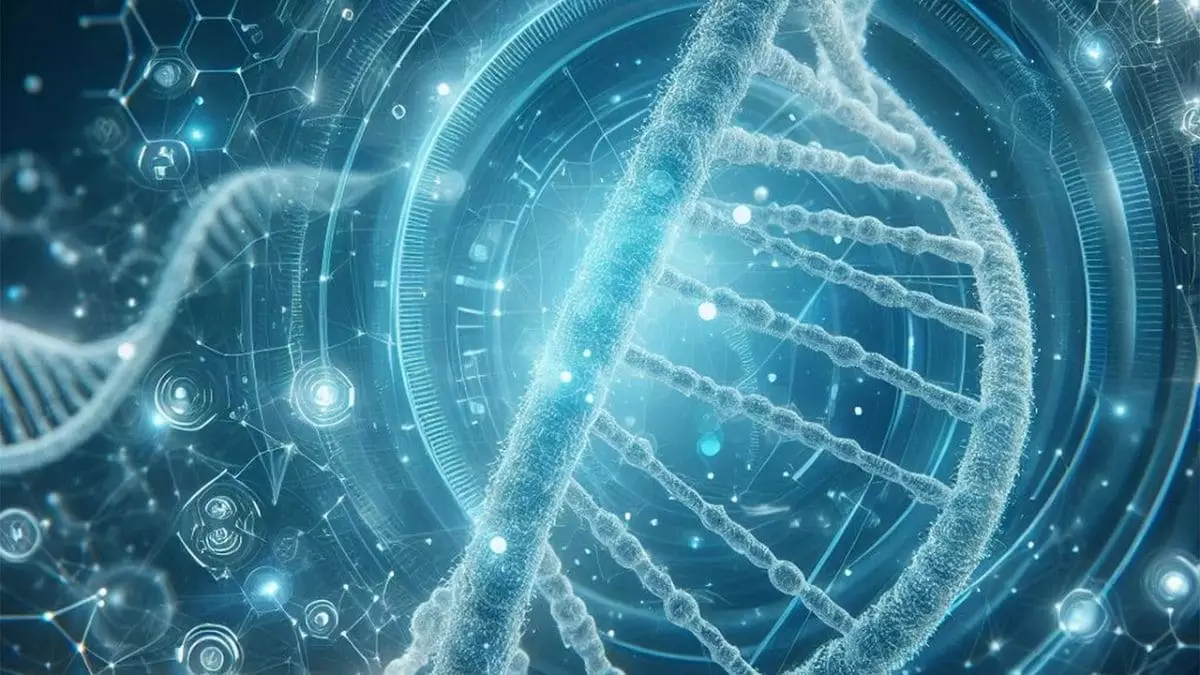A groundbreaking artificial intelligence model named Evo-2 has recently emerged, poised to transform the landscape of biological and genetic research. Developed by collaboration among the Arc Institute, Stanford University, and NVIDIA, this cutting-edge AI taps into a vast dataset of 128,000 genomes, spanning a diverse array of life forms. By harnessing this extensive genomic information, Evo-2 is capable of creating entire chromosomes and small genomes from scratch, thus offering unprecedented opportunities for insight into the genetic variants that could influence disease pathology. This article dives into the implications of this innovative technology and its promise for future research.
The success of Evo-2 stems from its training, which integrated a staggering 9.3 trillion DNA letters across multiple species, including humans, animals, plants, bacteria, and archaea. This comprehensive approach allows the AI model to discern not only coding sequences—those that directly translate into proteins—but also non-coding regions of the genome, which have typically been overlooked yet are crucial for understanding complex regulatory mechanisms. Researchers have long recognized that non-coding gene variants can contribute to the landscape of diseases, and Evo-2 stands out as a significant upgrade from its predecessors, which focused primarily on protein-coding sequences.
One of the most compelling features of Evo-2 is its potential to revolutionize genome engineering. By providing researchers with the ability to generate and scrutinize DNA sequences through an accessible web interface, Evo-2 empowers scientists to tailor their explorations based on specific research needs. Patrick Hsu, a bioengineer affiliated with both the Arc Institute and the University of California, Berkeley, emphasized that Evo-2 is not merely an off-the-shelf tool but a customizable platform that allows for diverse applications, thus democratizing access to powerful genomic insights.
The implications of Evo-2 extend well into the realm of healthcare, particularly in understanding genetic diseases. Preliminary evaluations suggest that the model excels in predicting mutation effects in critical genes such as BRCA1, known for its association with breast cancer. The capacity to analyze complex genetic structures was further evidenced when Evo-2 was utilized to investigate the genome of the woolly mammoth, showcasing its versatility and prowess in dealing with intricate genomic data. Such capabilities not only facilitate a deeper understanding of hereditary diseases but could also pave the way toward targeted therapies and personalized medicine approaches.
Further Refinements and Future Directions
Despite its promising results, experts caution that Evo-2 is still in a developmental phase—Brian Hie, a computational biologist at Stanford, pointed out that while the model has shown notable improvements in generating biologically plausible sequences, additional refinements are essential before it can produce fully functional DNA sequences suitable for real-world applications. Researchers are hopeful that ongoing efforts will soon translate into tangible advancements in designing regulatory DNA that governs gene expression, an area of intense interest in understanding cell identity and function.
The involvement of Evo-2 in the pioneering realms of synthetic biology and precision medicine indicates a transformative shift. As scientists continue to explore its learning capabilities from bacterial and archaeal genomes, the potential for creating novel human proteins becomes increasingly feasible. Such innovations position Evo-2 not just as a tool for gene design but as an integral player in the larger narrative of genome engineering, where the boundaries between species are blurred in pursuit of groundbreaking discoveries.
As the research community begins to adopt and refine Evo-2, the model’s contributions toward unraveling the complexities of genetic regulation and functional DNA sequence design are expected to expand significantly. With collaborative efforts and continued validation in the laboratory setting, Evo-2 may very well lead us into a new era of genetic research—one where the potential applications in synthetic biology and personalized medicine are as vast as the genomic datasets it is built upon. This AI model not only reflects a technological leap but underscores the ever-increasing symbiosis between artificial intelligence and biological research, shaping the future of genetics.


Leave a Reply